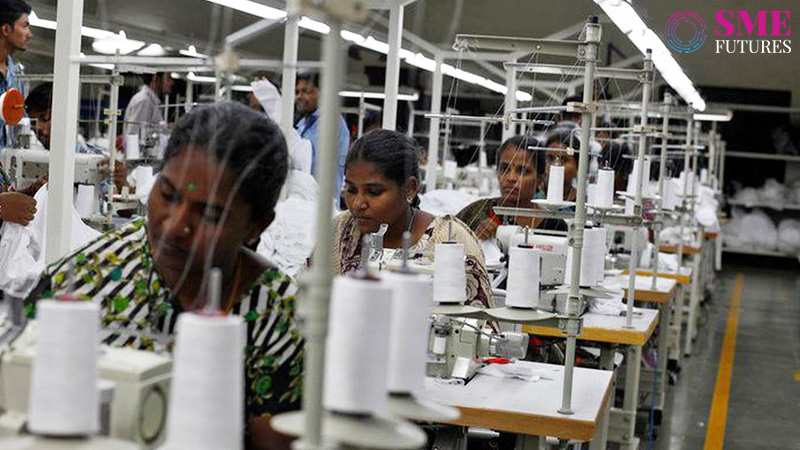The Indian economy has resumed its chase for the USD 5 trillion GDP target after a year of global supply chain disruptions. With a 29% contribution to India’s GDP, MSMEs are our economy’s growth engines. However, India’s MSMEs are yet to recover from the pandemic and are in dire need of a growth booster. One untapped potential awaits to be leveraged by our MSMEs; a talented pool of woman entrepreneurs and workers. Currently, only 14% of India’s MSMEs are woman-led, and women account for only 24% of the MSME workforce.
Demographic dividend and digitization; connecting Indian MSMEs to talent and opportunity
Women workers have demonstrated the highest professional levels and have gone beyond their prescribed duties throughout the pandemic. They are more tech-savvy and adapt to new skills and platforms quicker. Take the case of the 2.5 million Anganwadi workers who have been at the front lines of driving healthcare for communities. When enterprises were yet to come to terms with the new normal of working from home, these Anganwadi workers responded well to the Ministry of Child Development’s online training sessions. They pivoted to digital workflows and collaboration with the utmost ease. When the country’s manufacturing supply chain ecosystem is witnessing a historic offline to online shift, imagine what women entrepreneurs and workers can achieve for India’s MSMEs with minimal vocational training and reskilling for digital collaboration. The following measures can provide a roadmap for women entrepreneurs and workers to integrate themselves into India’s MSMEs.
Connect women entrepreneurs to new opportunities on marketplaces
The pandemic has negatively impacted 73% of women entrepreneurs, and 20% had their revenue nearly wiped out. Another 35% of the women entrepreneurs experienced a decline of 25%–75% in revenue. Connecting women entrepreneurs to B2B commerce platforms and marketplaces can enable them to find new opportunities to build their businesses better. Digital e-commerce platforms have made the constraints of space redundant in the face of social distancing. Enrolling in these marketplaces can enable women entrepreneurs to explore new demand trends, opportunities, and buyers for their goods.
Train women workers and impart skills for digital collaboration
One of the new normal characteristics is the onset of digital workflows and processes for digital collaboration. It is essential to train our women workers, equip them with the right set of skills, and employ them in the digital supply chain ecosystem. Doing so will allow our MSMEs to reduce brick and mortar infrastructure costs for sales offices and stores. It will also allow women workers to work from anywhere and have adequate flexibility to develop work-like integration.
Mirror collaboration on cloud platforms for work-life balance
90% of women work in the informal or unorganized sector and in jobs and industries that offer unskilled roles, pay less to women for the same quantum of performance, and do not comply with labour laws and safety regulations. With the advent of affordable and reliable cloud-hosted applications and SaaS solutions, real-time collaboration is a lot easier, safer, faster, and efficient. Migrating to full-stack cloud computing platforms can enable MSMEs and their women workers to collaborate with customers, suppliers, and partners way more seamlessly. Furthermore, MSME workers will save time and money on commuting.
Motivate women entrepreneurs to create a digital footprint
For women entrepreneurs in the MSME space to explore new avenues of business growth, they need to formalize and codify business processes through digitization. Woman-led MSMEs and woman workers need to create a digital footprint of commerce data. Doing so will improve their MSME units’ reliability before large enterprise buyers, and global brands honour regulatory requirements and comply with “fit-for-audit” standards like GST. Once our MSMEs formalize business processes, they will be competitive enough to find favour with enterprise buyers for their goods and collaborate as suppliers in their procurement ecosystem.
Enable women entrepreneurs to leverage digital credit lines for working capital
80% of female entrepreneurs in India prefer personal resources for their financing needs. Furthermore, only 14% of the 605 women-owned enterprises have availed formal bank loans to meet growth financing requirements. Formal integration with digital transaction platforms will enable women entrepreneurs to create a digital payment and receipt trail in the MSME space. They can leverage access to new credit lines for MSMEs and new-age working capital solutions like early payments from enterprise buyers, banks, and NBFCs.
Digitization can improve ease of living for women and ease of doing business for MSMEs
Precisely, what value can we unlock for MSMEs and the Indian economy by enabling greater participation of women in the workforce? If 50% of women join India’s workforce, we can add up to 9 percentage points to India’s real GDP growth rate. Aatma Nirbhar women entrepreneurs will create Aatma Nirbhar MSMEs that will be tomorrow’s job creators and turbocharge our economic growth engines.











